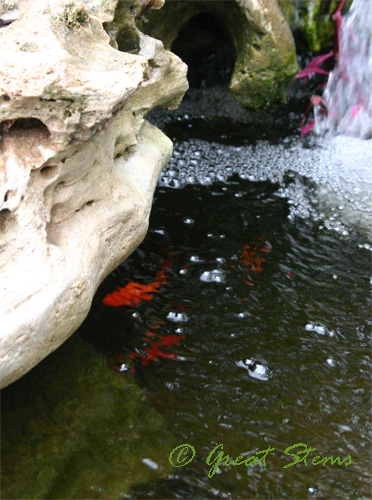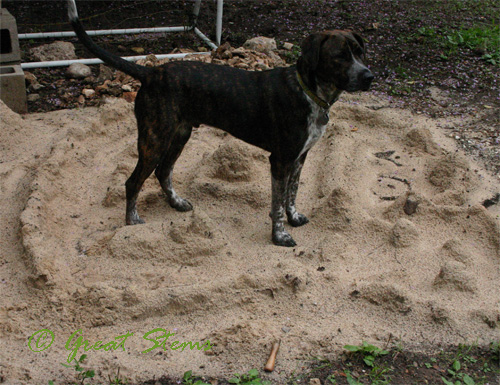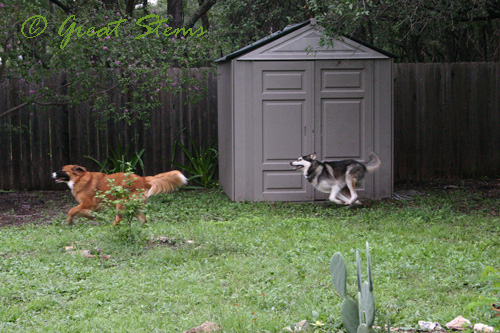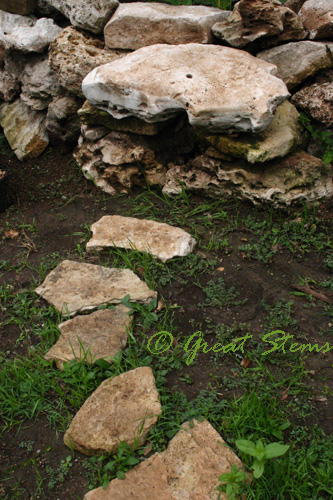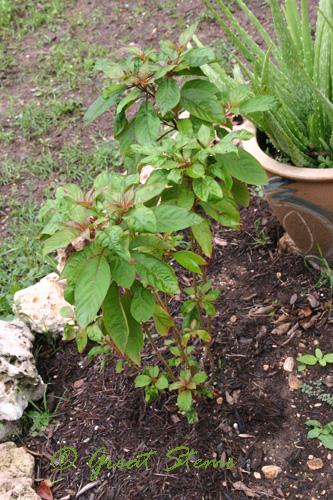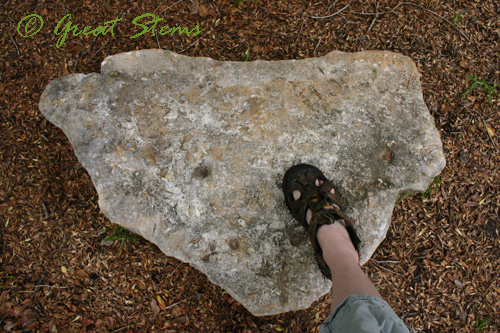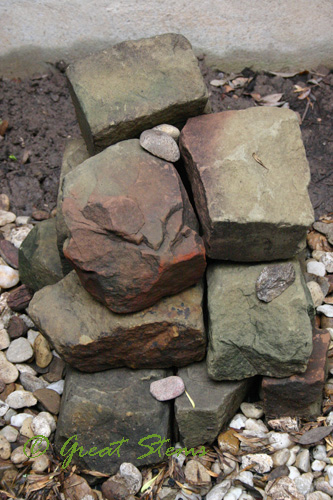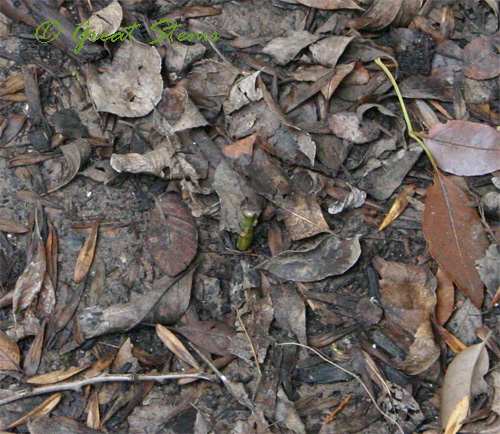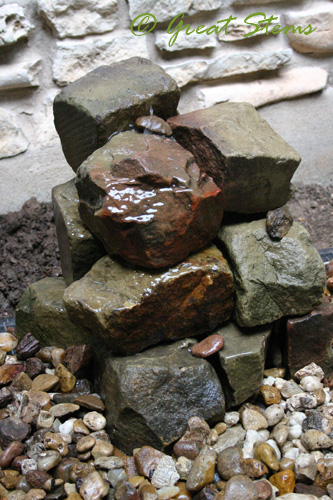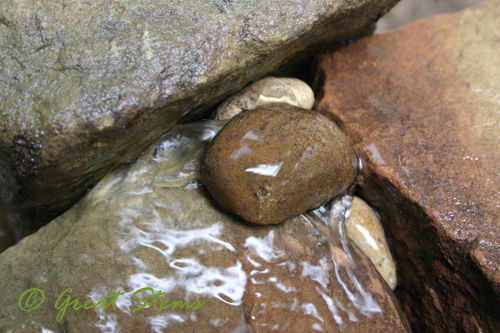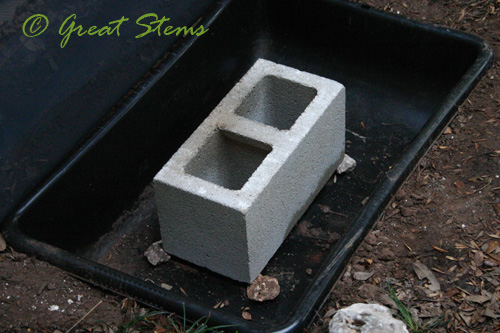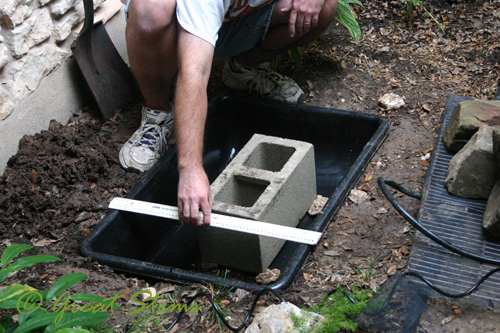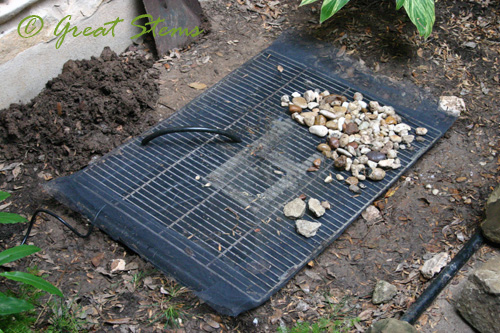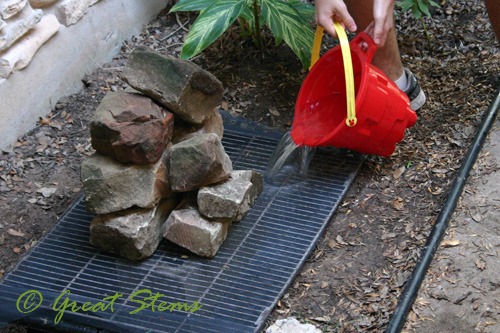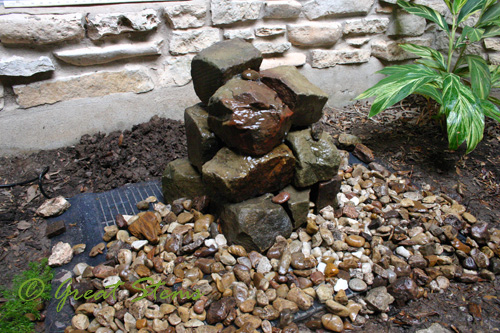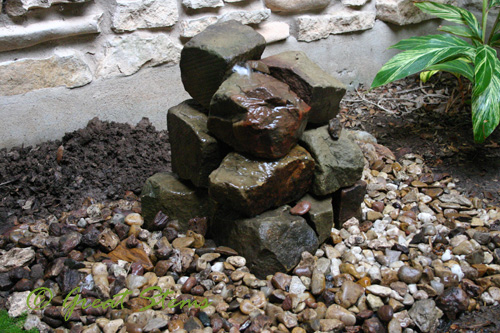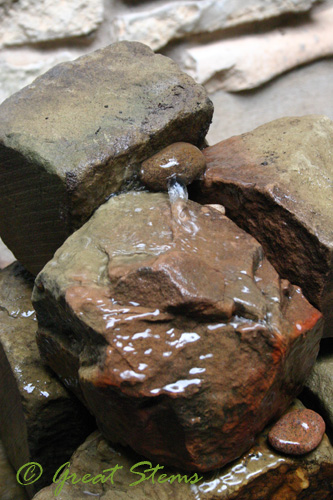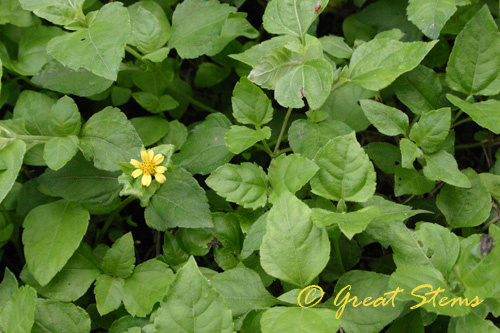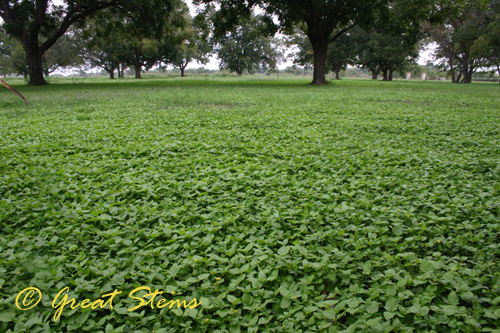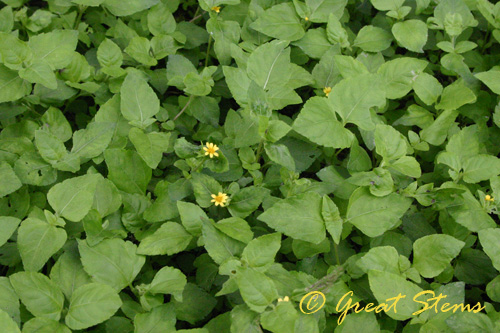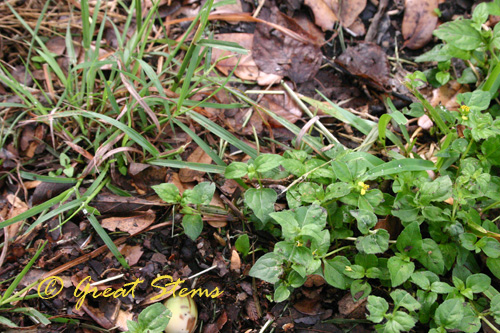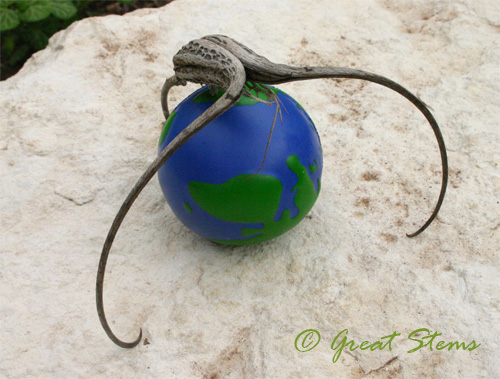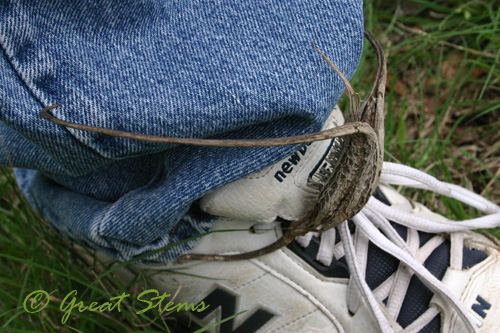We’re very fortunate that Texas is home to the truly special Lady Bird Johnson Wildflower Center, and we Austinites are particularly thrilled that it’s right here on the edge of our beautiful city. The center is dedicated to the conservation of native plant species across North America, providing an incredible online database of information about thousands of plants and giving visitors to the center a first-eye glimpse of the beauty of Texas plants.
Throughout the gardens lovely sculptures and other art complement the natural beauty of the Texas flowers, shrubs, and trees.
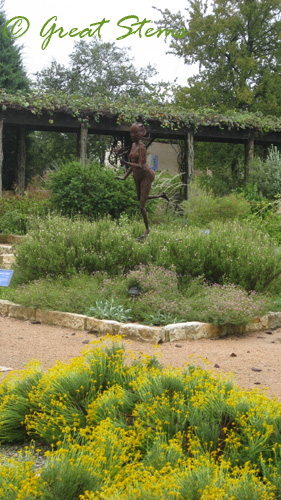 Spectacular combinations of colors and textures bring unconscious serenity to the viewer. Here the majestic Goldenrod really stands out against the wispy seeds and grasses of Big Muhly.
Spectacular combinations of colors and textures bring unconscious serenity to the viewer. Here the majestic Goldenrod really stands out against the wispy seeds and grasses of Big Muhly.
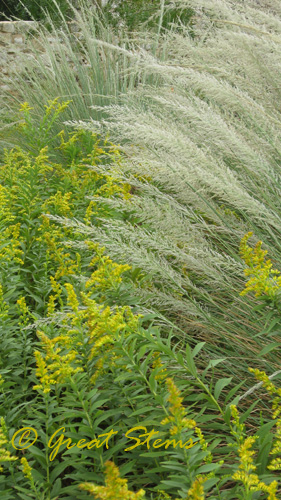
All around the center are fantastic displays of plant diversity, with settings typical of our state: prairie, pond, woodland, meadow, and more. Even a few coastal plants are represented, minus the ocean and the sand.
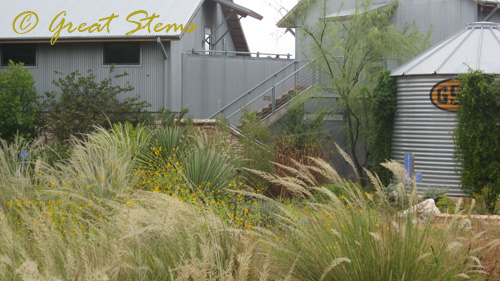 It was my husband’s first time to the Wildflower Center, so we did a quick little walkaround, but there wasn’t much time to take a thorough tour. There is so much more the center offers, from truly impressive rain collection systems to walking trails to green roof research to continuing education courses, and more.
It was my husband’s first time to the Wildflower Center, so we did a quick little walkaround, but there wasn’t much time to take a thorough tour. There is so much more the center offers, from truly impressive rain collection systems to walking trails to green roof research to continuing education courses, and more.
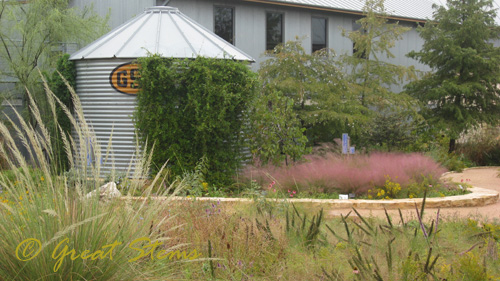 But twice a year, Texan gardeners get very excited about a special event that takes place at the Wildflower Center. The center hosts an outstanding
But twice a year, Texan gardeners get very excited about a special event that takes place at the Wildflower Center. The center hosts an outstanding
native plant sale each fall and spring, and gardeners from all over the state converge to seek and buy plants they might not be able to get at any other time. I know that there are always plants I’ve never seen before, and it’s hard not to get carried away with purchasing. People line up with their wagons and lists.
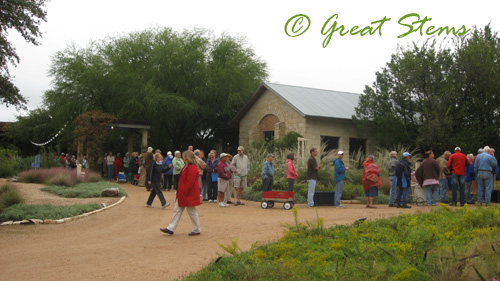
Even the rainy day couldn’t keep the buyers away, though fortunately the rain came the night before and in the morning, but not during the actual sale. The crowds were a little smaller than is typical of the opening day of the sale, but it might be chaotic this weekend instead.
Here you can see some of the plants set aside for the rest of the weekend, so that plants would be available throughout. You can still see the mini-lake left over from the heavy rains.
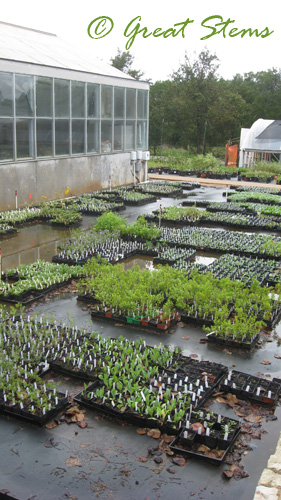 Up near the front of the line, my husband and I chatted with our friendly line neighbors.
Up near the front of the line, my husband and I chatted with our friendly line neighbors.
(I had great fun trying to figure out where to put the copyright on this image of my husband. He wouldn’t let me plaster it right across his nose, though.)
 Of course, when the ribbon was cut and the sale actually opened, we all said something along the lines of “It was so very nice talking to you! Now stay away from my plants!” (And at this point I stopped taking pictures, because the mad rush to find all coveted plants began. In fact, if you couldn’t tell from the images — these are from my pocket camera instead of my regular camera. I had to make sure I wasn’t overburdened when plants were at stake! Yes, at first it can seem like a frenzy, particularly for the rarer species. I didn’t start taking pictures again until all our plants were chosen, and by then many buyers had already cleared out, so this crowd looks small compared to the earlier blockade of people all trying to get their carts through the aisles while collecting as many plants on their list that they could).
Of course, when the ribbon was cut and the sale actually opened, we all said something along the lines of “It was so very nice talking to you! Now stay away from my plants!” (And at this point I stopped taking pictures, because the mad rush to find all coveted plants began. In fact, if you couldn’t tell from the images — these are from my pocket camera instead of my regular camera. I had to make sure I wasn’t overburdened when plants were at stake! Yes, at first it can seem like a frenzy, particularly for the rarer species. I didn’t start taking pictures again until all our plants were chosen, and by then many buyers had already cleared out, so this crowd looks small compared to the earlier blockade of people all trying to get their carts through the aisles while collecting as many plants on their list that they could).
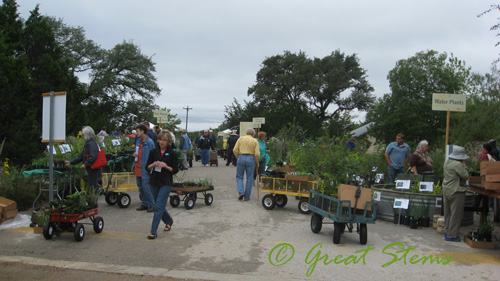
Now, this being Texas, even though there is definitely a mad rush at first, people really are friendly about it. And I think the biggest rush is for trees and shrubs, and perhaps some succulents and water plants. The perennials can go fast, but in general there are plenty available.
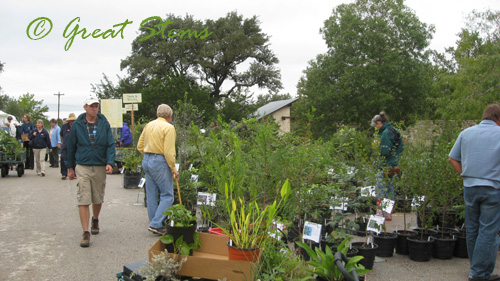
I
should mention that two Native Plant Society groups and Native American Seed were also there as vendors, and I made sure to visit their tents.
My special purchases of the day were Rusty Blackhaw (there was definitely a crazed rush to find these, and even then, only very small plants were available; I consider myself very fortunate to be able to buy any) and Anacua, or Sandpaper Tree. I also got a gorgeous Anachacho Orchid, an Evergreen Sumac, and a few other smaller plants. I even got a Lizard’s Tail plant for my pond. My husband was a trooper about it, despite the money being spent. But I’d been preparing him for several months that by gosh we were going to the Fall Plant Sale at the Wildflower Center, no matter what! 🙂
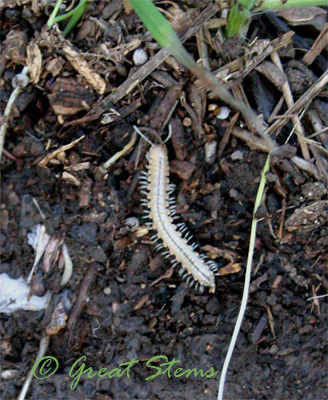
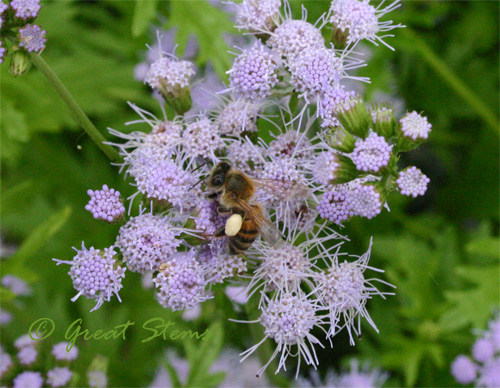
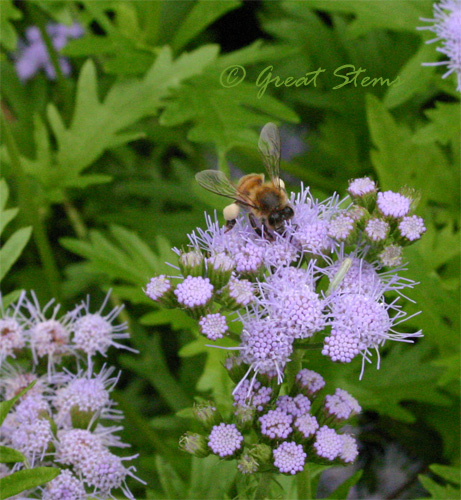
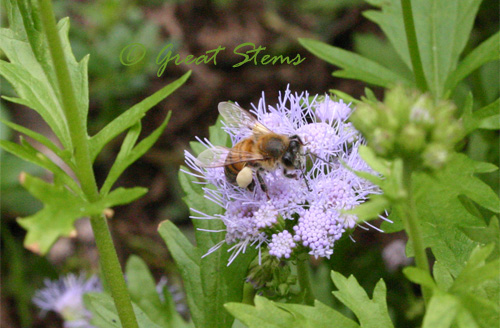 In the same patch of flowers, the honeybees on the Zexmenia had bright orange pollen baskets on their little legs.
In the same patch of flowers, the honeybees on the Zexmenia had bright orange pollen baskets on their little legs.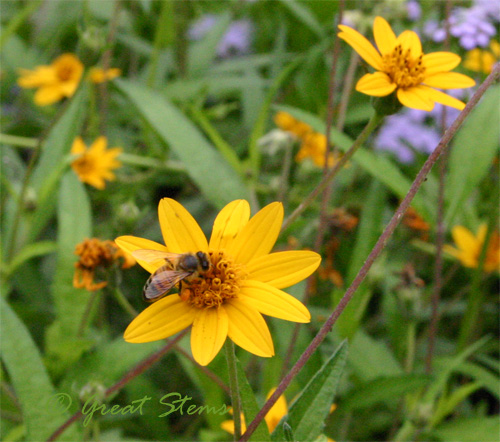
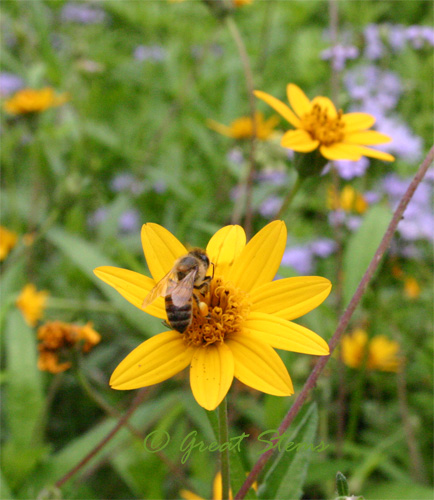
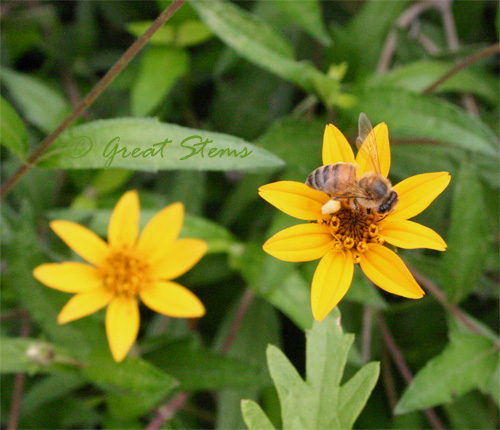
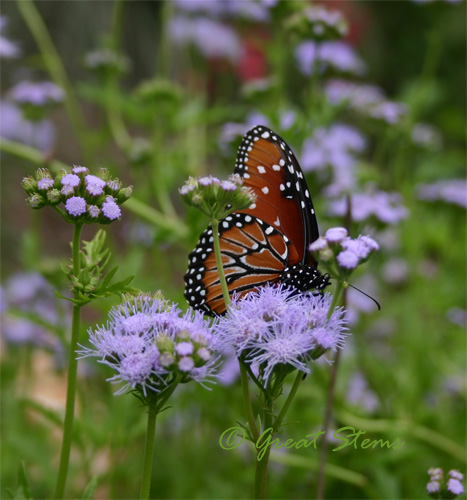
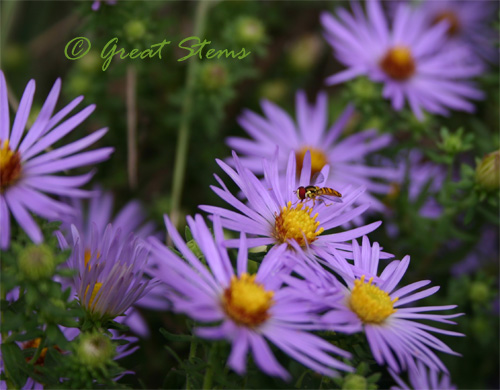
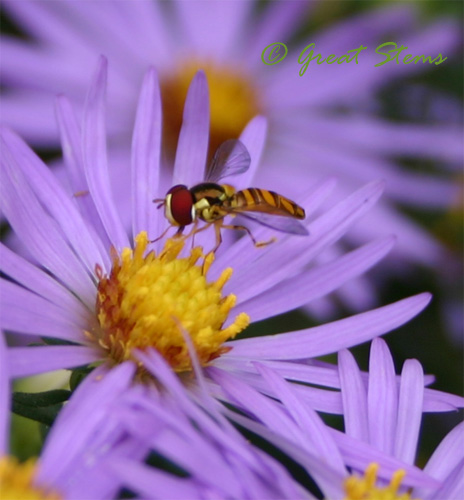
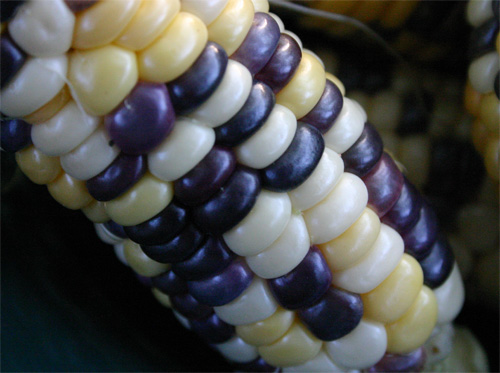
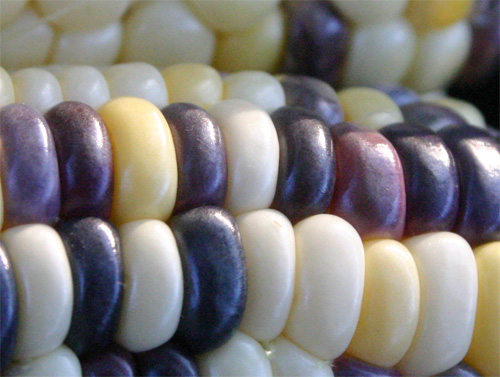 ’cause this bud’s a dud.
’cause this bud’s a dud.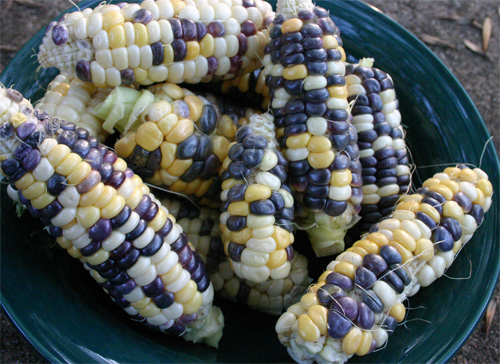
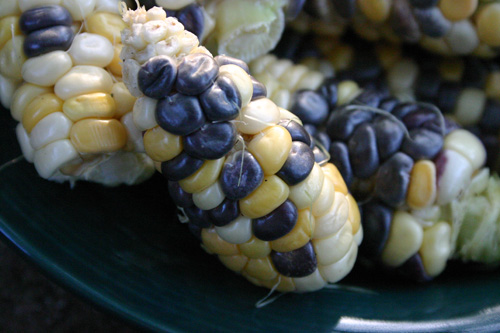
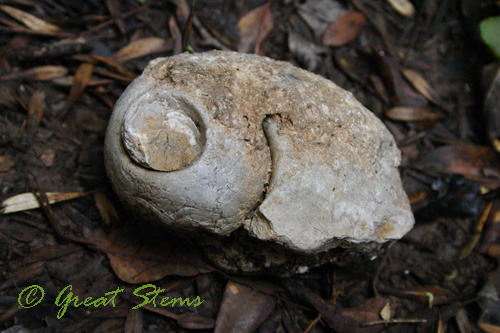
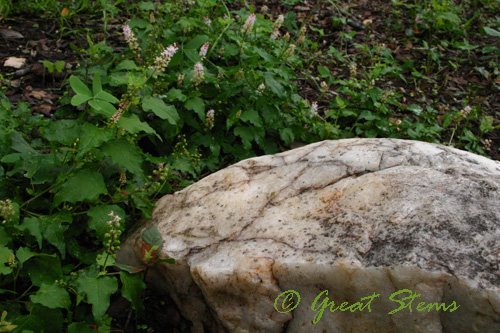
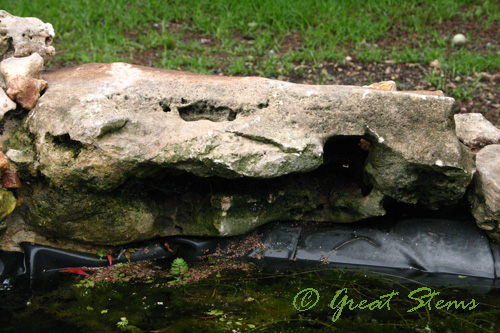
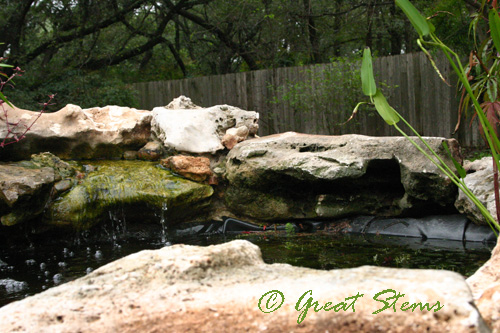 The rocks forming the back wall of the waterfall actually look like the back of an alligator — I forgot to get an angled shot to show you that a little better, but I’ll do that another time. Now I just need to figure out where to put my dwarf papyrus.
The rocks forming the back wall of the waterfall actually look like the back of an alligator — I forgot to get an angled shot to show you that a little better, but I’ll do that another time. Now I just need to figure out where to put my dwarf papyrus.